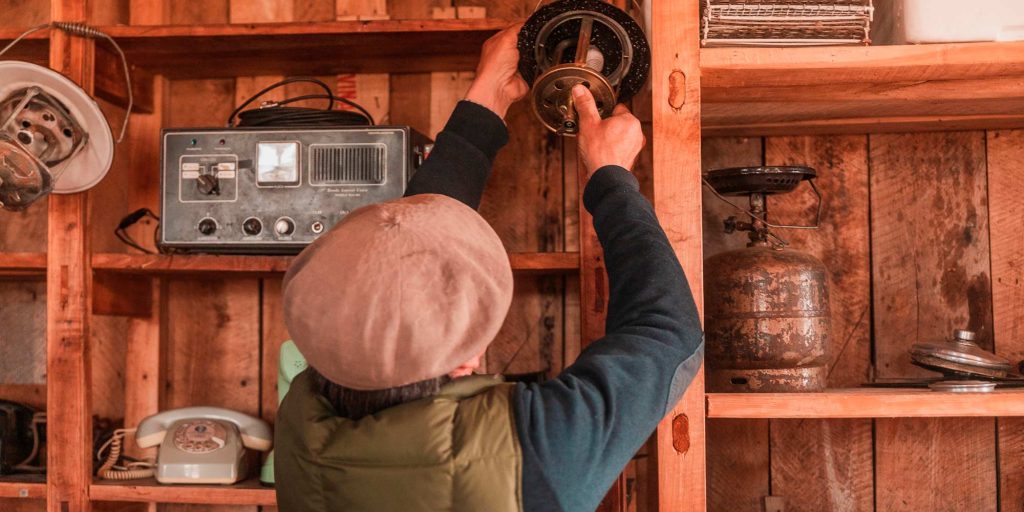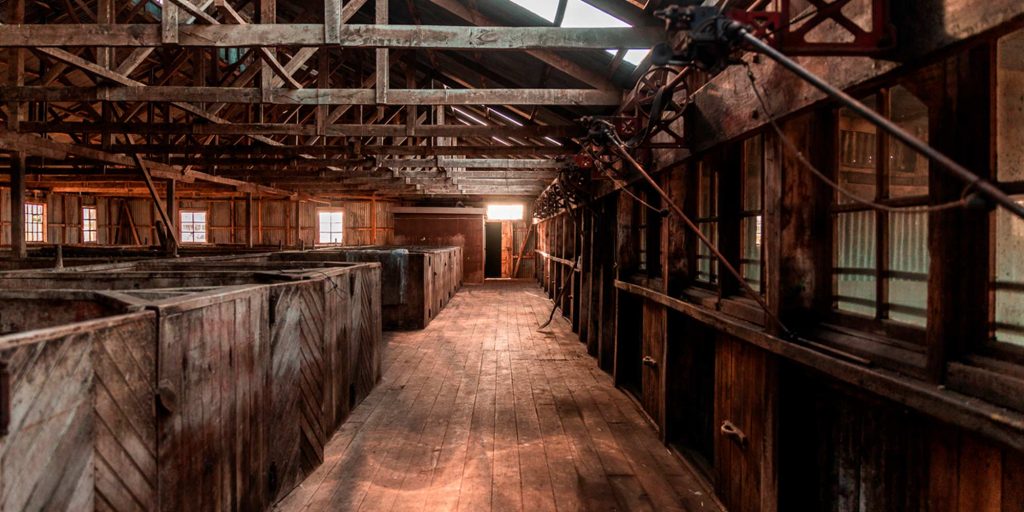This building has a lot of history and surely houses many anecdotes. From the founding of the farm in 1904, Chileans, Argentines, Spaniards and also the Selk’nam, who lived in the surrounding areas, worked there. In those times, according to the chronicles, the workers were paid with merchandise and also with money; not only Argentine, but as it was a custom in those times also in Chilean or English notes and curiously also in check format.
The inventory of the warehouse as of September 30, 1919, covers 13 sheets detailing all kinds of food: from fruit to cloves, clothing, footwear, blankets, cleaning and toilet items, mouthpieces and hookahs, gunpowder and ammunition, kitchen utensils, materials for construction and maintenance of the establishment; as well as various elements such as handkerchiefs, pens, paper, childrens pinafores, skeins of wool, alcoholic beverages, cigarettes, tobacco, matches, rings, needle and thread, cloth, scissors, candles, mirrors, etc.
Over the years, the supplies provided to the workers were modified; in the mid-50s all the houses were occupied by staff, and the role of the Cook on the farm was very important, he worked in the Kitchen and the Bakery where bread was baked daily. There is a large dining room in which the workers who lived on the farm ate and the higher-ranking staff had a separate dining room.
This building was also used as an accounting office, for all labour and salary paperwork. It was an important place since the safe was here, and also here the two telephones were installed with which one could communicate with the neighbouring farms.
At present, due to the changes that livestock farming has undergone on the island, a supplies building is no longer necessary, since the people who live on the farm are few and we get our supplies from Río Grande or Tolhuin.
Today the Building is used to store electricity, plumbing, gas, and veterinary spare parts, and we are also putting together a museum section since we believe it is important to value all the history and work of so many years in the area.



